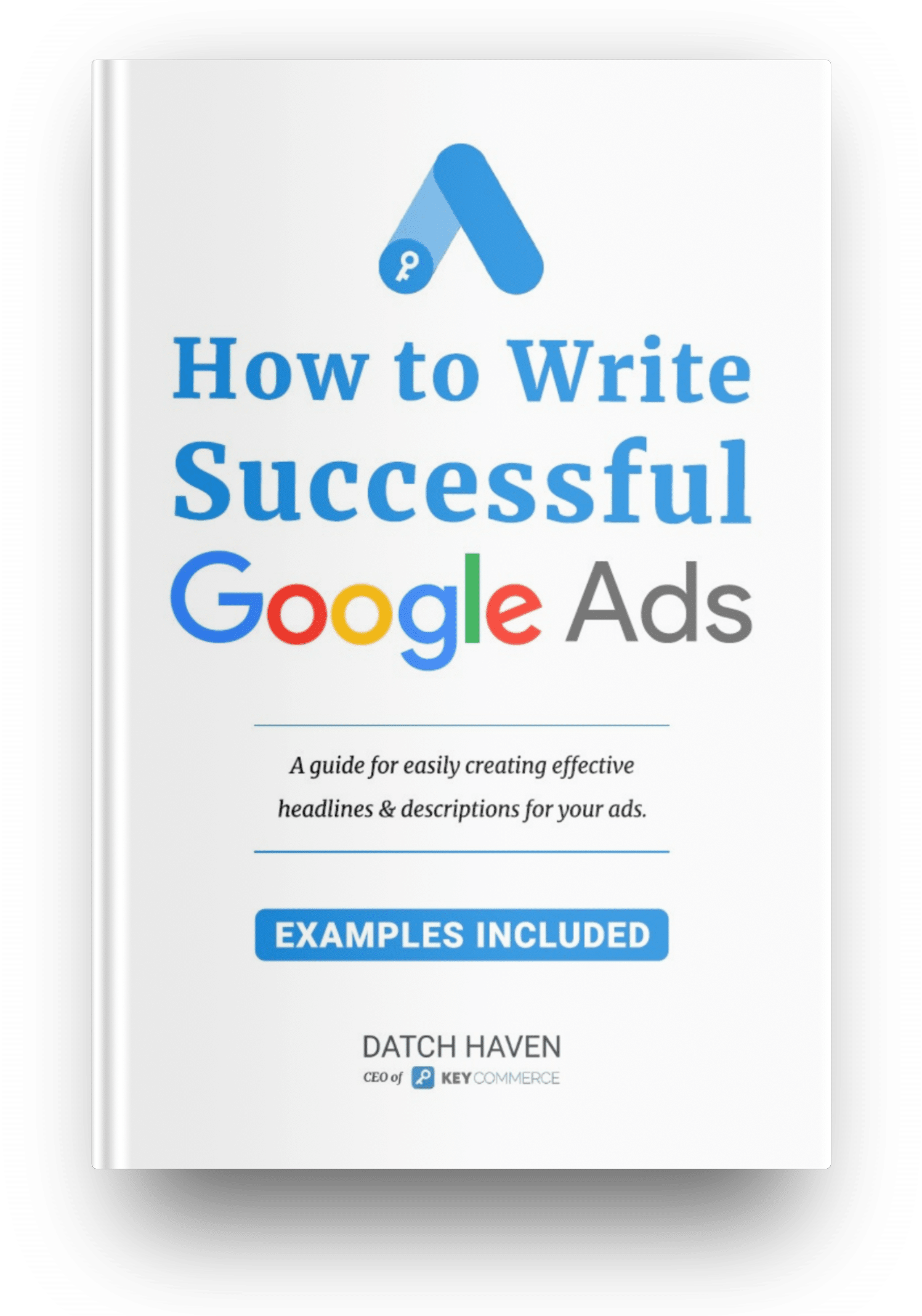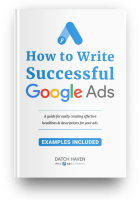Right off the bat, it’s worth mentioning that this is going to be an ongoing process – as long as you’re running a campaign, you’ll be tweaking it and making changes to discover what delivers the most sales.
The final part of our Google Shopping campaigns guide is going to explain a few different things: bidding on the product level, the life cycles of a campaign, and what you can do to optimize your campaign and ensure it’s heading in the right direction. So, let’s jump right into it.
How to Set Up Your Campaigns to Bid on the Product Level
One way of optimizing your campaign is to finetune your bidding strategy, and one approach is to bid on the product level. What this means is that you’re setting bids for individual products within the campaign, as opposed to just having the same bid for the entire campaign.
On the other hand, for a fresh campaign, it’s a good idea to stick with the same bid for all products because it gives you a chance to gather data about each product and you can then figure out what ideal individual bids would look like.
After you get this data though, product level bidding is crucial as all products are going to perform differently, so you could end up over-bidding on some products. So, how do you go about setting up product level bidding?
- Step #1 – Go to Google Ads and open the Shopping campaign you recently set up.
- Step #2 – Head over to the Ad Groups section and click the plus symbol.
- Step #3 – Select the products you want to manage bids for on the product level and click “Save”.
- Step #4 – You’ll now be able to see the chosen products’ individual performance and you can use this data to edit specific product bids.
This is a huge step to take and handling your bidding strategy this way can be scary at first because, after all, you’ve got money at stake. But keep in mind that by implementing this strategy you’re able to lower your CPC while maintaining the same results as before (if not better).
Google Shopping Campaigns Go Through Life Cycles
Through the course of running your eCommerce store, you’ll probably run a bunch of different campaigns all of which have different goals. Moreover, campaigns go through different stages – or life cycles – and understanding each of them will benefit you in the long haul.
1. Fresh Campaigns
The first stage is when you’ve created a fresh Google Shopping campaign, and this is important as Google will be crawling your products to figure out what exactly you’re selling. This means they can match your products with the best search terms.
You’ll get a lot of irrelevant clicks at first, but this is normal. The best thing to do is to monitor the search terms report and build a negative keywords list. Any terms that are too general to convert into a sale, add them to the list. Your job is to sculpt the traffic being directed to your products so that you’re getting a somewhat decent conversion rate (3% on average is a great place to be).
2. Getting Clicks and Impressions
At this stage, Google has learnt what it needs to know about your products and is confidently putting them in front of the right customers.
People tend to worry at this point that they’re not getting enough impressions or clicks. Low impressions mean that your products aren’t being listed in search results, and this can be fixed by increasing your bids.
If that doesn’t help give you a boost, the problem could be that your product feed isn’t optimized. Go back and revise product titles, descriptions, and images to ensure your feed is of high quality.
3. Consistent Conversions
You’ll now be consistently raking in conversions and your Shopping ads will be shown to high-intent searchers, maximising your conversions. This tends to be a slow stage at first, albeit with there being some quick wins along the way, but sales should start coming in.
Your sales will depend on several factors like how optimized your website is. If you’re sending traffic to a website with low-quality product images, poorly written descriptions, and you haven’t built a strong brand, it’ll prove tough to get your campaign off the ground. Although these things aren’t mandatory, they’ll make your life a whole lot easier.
4. Profitability Focus
This is the part where you knuckle down on the numbers, adjust your bids, and maximise your profits. Bid higher on products that are more profitable and reduce bids on the less profitable products – this will get more sales on your most profitable products.
But remember that there’s a ceiling as to how much you can bid on products before you start losing money:
Product Profit x Conversion Rate = Maximum Cost Per Click (CPC)
Now that you’re getting consistent conversions, you want to figure out if you can be more cost-efficient. Can you spend less and maintain the same conversion rate? Look at the numbers, figure out if this is possible, and maximize your profitability.
5. Automated Bidding (Optional)
This is completely optional and if it’s too far out of your comfort zone, there’s no harm in disregarding this completely. But if you’re open to giving it a shot, after you hit between 50-100 conversions per month with your Google Shopping campaign, consider running automated bidding (such as a targeted ROAS strategy).
In truth, this could go either way, but it’s a good way of preparing your campaign for massive scaling, especially if you’re about to sink a bigger budget into it.
6. Scaling to the Moon
And the best part of running Google Shopping campaigns: scaling the campaign. You’ve now got a solid campaign that generates sales, the next step is to push even more money into the campaign and scale the results to get more sales.
The extent you choose to scale a campaign is up to your discretion – you might double up or just add 25% to the budget.
The important part is that you actually scale because if you’re getting the results and sales are coming in, there’s no reason to not reinvest and drive more customers to your eCommerce store.
Tips for Optimizing a Google Shopping Campaign
To finish off this part of our guide, in this last section we’ll be explaining some useful tips that will further help you to optimize your Google Shopping campaign.
Tip #1. Make One or Two Campaign Changes at a Time
If a campaign isn’t performing well, as in really badly, your first instinct will be to go over everything with a fine-tooth comb and switch up whatever you feel isn’t “right”. Don’t do this. Every single change you make to a campaign will have an effect, positive or negative, and if you change too many things you won’t know what exactly is influencing your results.
This might not sound like a huge deal but it’s important for you to understand why you’re getting the types of results you’re getting – if a campaign’s performance is outstanding, wouldn’t you want to know why that’s the case so that you can replicate that performance in future campaigns?
So, make one or two minor changes and wait a few days before gauging how those changes reflected in your results. If the campaign doesn’t show any signs of turning around then make more changes. Avoid overhauling a campaign too abruptly.
Tip #2. Mess Around with Scheduling
Scheduling is another useful tool you can mess around with when running a campaign. The fact is, your Shopping ads might get better engagement on the weekend or a higher conversion rate on certain days. You might even find that some products only sell at night.
Using your performance data you might be able to find that scheduling benefits you and if so, give it a shot.
If you do discover that your ads perform exceptionally well in the evening, you can focus your campaign to that timeframe, possibly raise your bids, and invest heavily in that (while lowering bids earlier in the day).
Tip #3. Keep Reviewing the Negative Keywords List
Like we said before, your negative keywords list can be a great way of limiting how much money is being wasted from your campaign. But it’s also important that your list isn’t too limiting in the sense that it stops you from getting high-quality clicks.
At first, use common sense to add keywords to the list – if you’re getting a lot of impressions from very general terms, this will lower your conversion rate and is pretty much a waste of money.
Once you’ve got some conversion data, we’d recommend you add to the list based on a minimum ROAS or maximum CPA. If your data shows that you’ve spent a lot on a search query that’s getting minimal conversions, throw it onto the list. This approach can be slightly more expensive but it’s also a crazy effective way at funneling the right traffic to your store.
Tip #4. Don’t Be Afraid of Running Multiple Campaigns
To start with, you’ll want to stick to just one campaign – there’s no point in getting overwhelmed and setting yourself up to fail. But after you’ve gone through our guide, learned how to optimize Google Shopping campaigns, and your first campaign is (almost) running itself, getting another campaign up and running isn’t a terrible idea.
Keep in mind that each campaign should have specific goals and setting up a second campaign would enable you to pursue more goals.
Let’s say your first campaign is aimed at search terms for branded products, you could run a high priority campaign that is focused on your discounted products. There are lots of possibilities so don’t be afraid of experimenting!
Tip #5. Try Different Types of Shopping Ads
If you go back to the third part of our Google Shopping campaigns guide, we went over the 3 types of ads you can run:
- Product Shopping Ads
- Showcase Shopping Ads
- Local Catalog Ads
Local catalog ads are used by local businesses so aren’t any use when it comes to eCommerce stores, but the other two should both be utilized.
As you’re getting used to running a Shopping campaign, stick with product shopping ads. But as you get more comfortable, look into running some showcase shopping ads. This is another way that you can split test your campaign and work towards getting the best conversion rate possible.
Tip #6. Switch Up the Campaign Structure
Your campaign structure can also impact your results but it also changes the way that you run the campaign.
The way we’ve taught our readers to set up their campaign is the most basic approach (as it should be for beginners) – one campaign, one ad group, and one product group. But again, when you get comfortable, you can start creating product groups and have separate bids for each group.
This means you can create product groups based on brand, condition, category, and other variables, adding another aspect to campaign management.
Tip #7. Do Competitor Research
This might seem like cheating, but it’s not. Doing research and finding out what your competitors are doing, and what’s working for them, will benefit you and help you fine tune your own campaigns.
Think about it: they’re doing tests to find out what gets the most conversions just like you are, and researching them will dig up what they’ve found from their tests.
If we take your product feed, for example, give one of your products a quick Google search and go to the Shopping tab. Is there another seller above you in the listings? Great, look at their product and compare it to your own product data. Do they have a better description, cheaper pricing, more images? This is just one way you can use competing products to benefit your campaign.
Conclusion
That wraps up the final part of our Google Shopping campaigns guide and you should now have the confidence to run your own campaign from A to Z. It’ll be scary to take on the task for the first time but be assured, once you get going and have a thriving campaign, the results will put that to rest.
Some of the optimizations that we covered in this guide fell under the product feed, which we covered in the previous part of our guide, but there is more optimization you can do. Keep in mind that you can go back and further optimize your product feed later, but the optimization we’ve gone over in this part of the guide focuses on the Shopping campaign as a whole.
Most important is that you remember that optimization is an ongoing process. You won’t be doing these things once – the cycles we introduced need to be done for every campaign you run. But once you run a campaign and get used to the process, it’ll feel almost effortless and you’ll be getting such great results that running the campaign will be a cakewalk!












